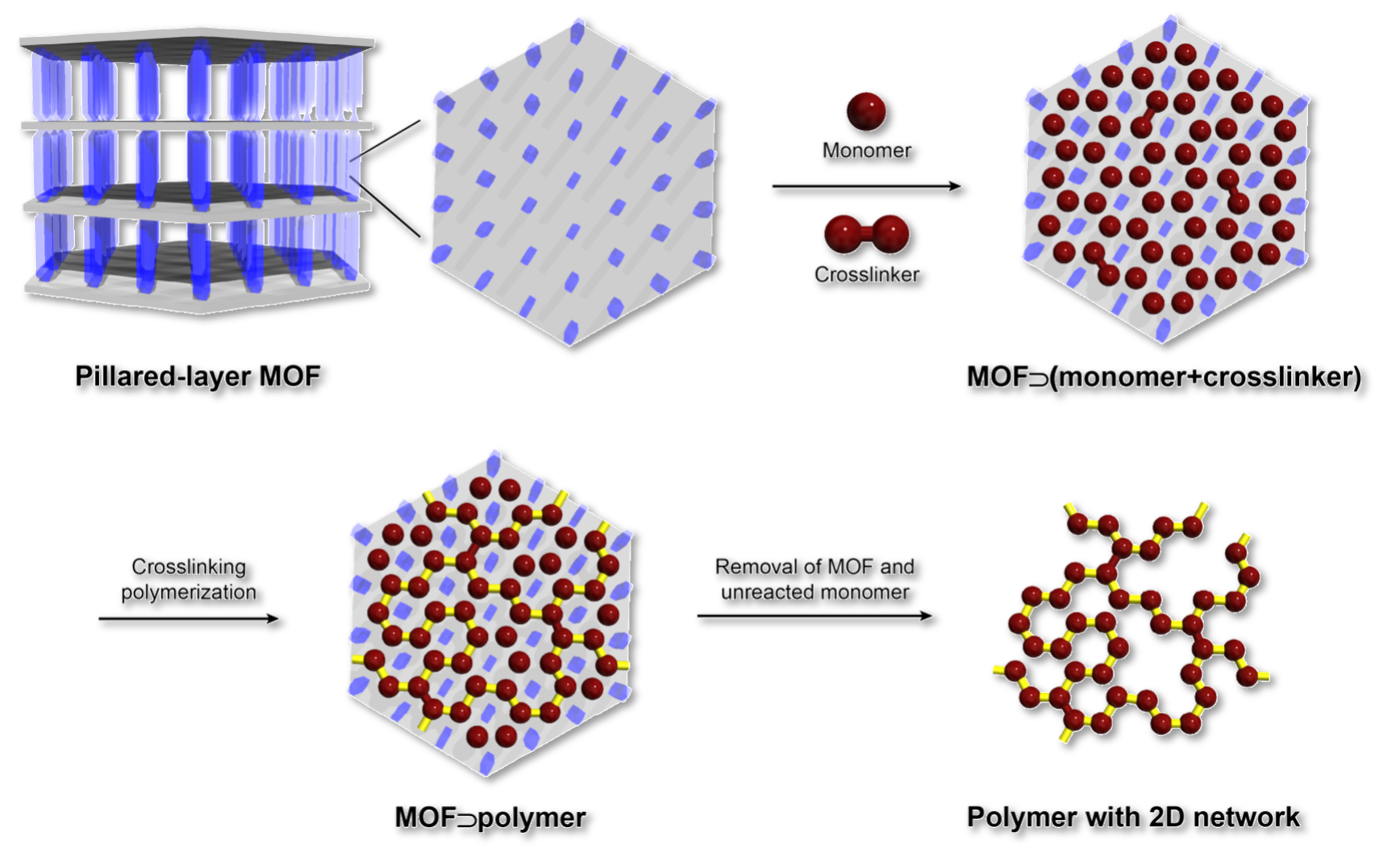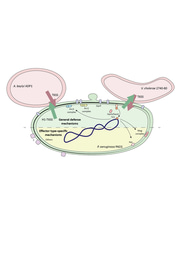The thinnest vinyl polymer sheets
Published in Chemistry

Recent development of two-dimensional (2D) materials is phenomenal. As we mentioned in our paper, 2D materials show exotic functions that are quite distinctive to the properties of conventional bulk materials. It is evident that the development of such low-dimensional materials will be the biggest and new paradigm in material/polymer/organic/inorganic chemistry in the very near future. In general (at least in chemistry field to date), each 2D material reported is exclusive to the specific monomers and reactions employed, such as those seen in covalent organic frameworks (COF) chemistry, topochemical synthesis, and crosslinked monolayers deposited on the surfaces. Our approach using metal organic frameworks (MOF) as 2D host template is universal to any monomers in principle and can definitely address this versatility issue. We believe that the significance of our work underlies the rational synthesis of 2D network polymers from conventional easy-accessible monomers, such as vinyl monomers. Note that no one could develop such universal synthetic strategy tolerant of any monomers to produce unimolecularly thick polymer sheets so far. Thus, novelty of the present work is not only on structural integrities of the products but also versatility of our new reaction systems. High solubility of our 2D network polymers, despite the cross-linked structure, is another remarkable finding and an advantageous feature for materials processing, which contrasts to previous 2D materials that are generally resistant to solvents.

2D materials are expected to have many exotic properties undiscovered so far. This applies to all of 2D substances including COFs, inorganic, organic substances, and polymers. In the present study, we are happy to unveil an atypical mechanical behavior of 2D polymer networks. We think that this is only one aspect of their potentials where most of them still remain untouched. For material chemistry, scalability of reaction is always a big issue since many experiments for the characterizations and functions essentially require the gram scale of samples/specimens. This fact often hampers the exploration of such potentials of 2D materials. Our MOF-templated synthesis of 2D network polymers can also address this scalability issue as demonstrated in the paper, appearing in marked contrast to the above-mentioned 2D materials.
Follow the Topic
-
Nature Communications

An open access, multidisciplinary journal dedicated to publishing high-quality research in all areas of the biological, health, physical, chemical and Earth sciences.
Related Collections
With Collections, you can get published faster and increase your visibility.
Women's Health
Publishing Model: Hybrid
Deadline: Ongoing
Advances in neurodegenerative diseases
Publishing Model: Hybrid
Deadline: Dec 24, 2025





Please sign in or register for FREE
If you are a registered user on Research Communities by Springer Nature, please sign in